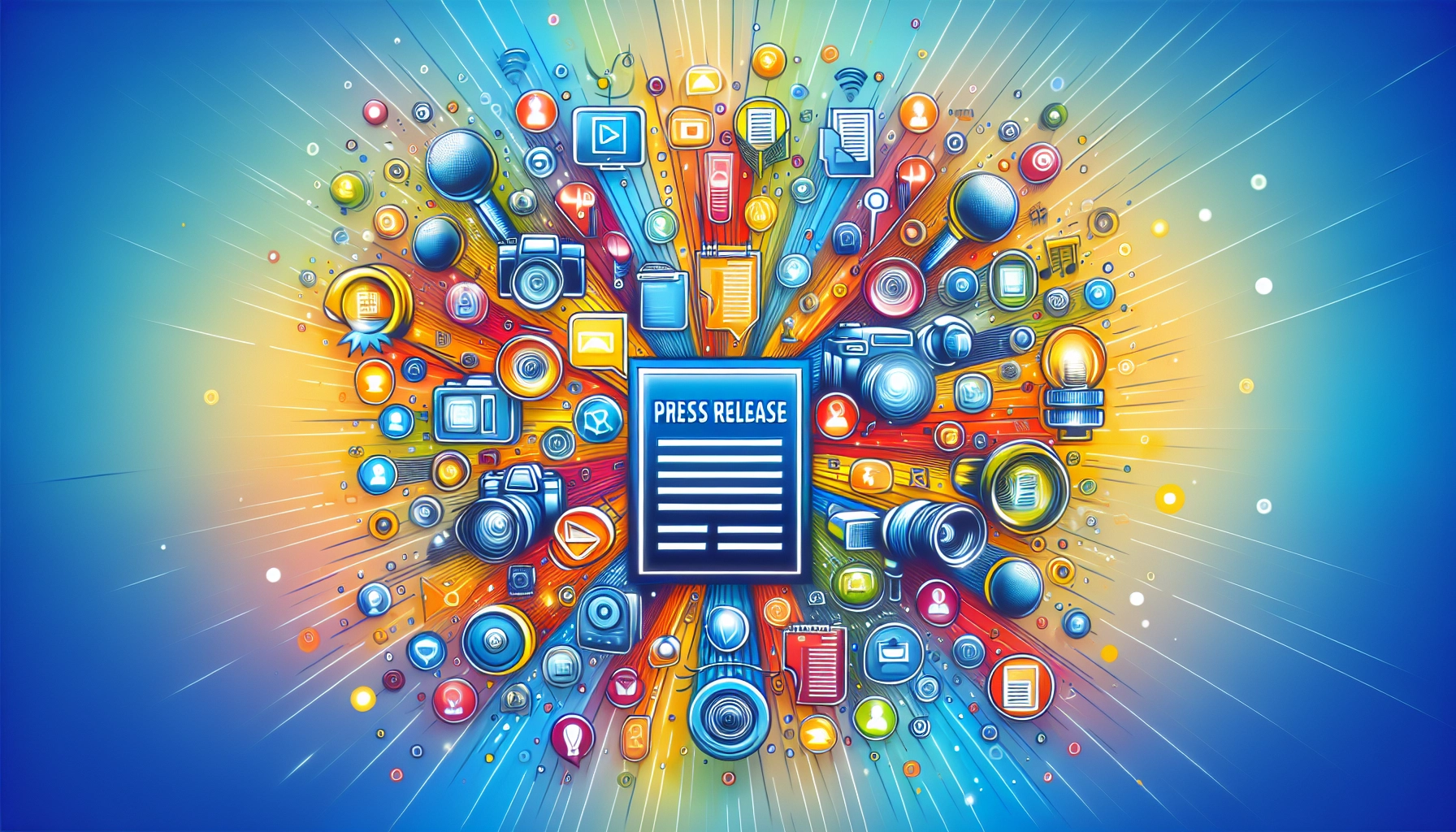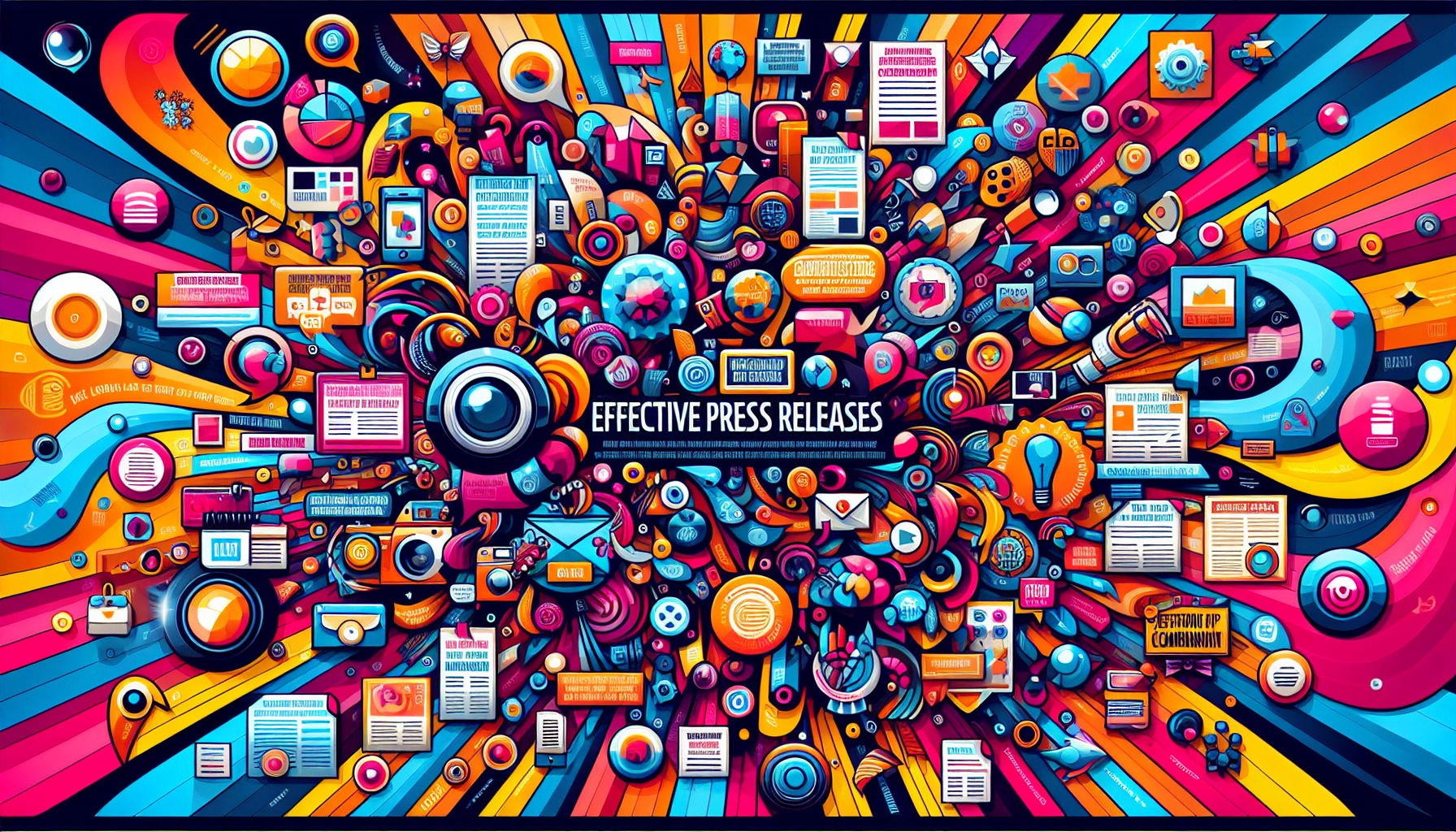Table of Contents[Hide][Show]
- Key Takeaways
- Defining a Press Release
- Key Elements of a Good Press Release
- Types of Press Releases
- Benefits of Issuing a Press Release
- How Press Releases Work
- Differences Between Press Releases and Other Media Communications
- Tips for Writing a Effective Press Release
- Press Release Distribution Strategies
- Best Practices for Press Releases
- Common Mistakes to Avoid
- Measuring the Success of Your Press Release
- Summary
A press release is an official statement from a company designed to inform the media and public about significant news. Digital media outlets play a crucial role in distributing these press releases and reaching a broad audience, including journalists and influencers. Press releases help businesses share updates, events, and changes while managing their public image. In this article, we’ll explore a press release and its essential elements, types, and benefits.
Key Takeaways
- A press release is an official announcement from a company’s PR department designed to inform the media and public about significant updates or events. The release maintains control over the organization’s narrative.
- Critical elements of a successful press release include an engaging headline, a concise lead paragraph answering essential questions, quotes from stakeholders for credibility, and a clear boilerplate section summarizing the company.
- Effective press release distribution strategies, such as utilizing newswire services and social media, enhance visibility and engagement while monitoring performance metrics to help assess the release’s impact.
A press statement is a shorter, more targeted communication that typically addresses a specific issue or inquiry. Unlike a press release, it focuses on delivering a concise message without extensive background information and is often issued in response to external events or media inquiries.
Defining a Press Release

A press release is an official announcement issued to the press and public by a company’s marketing communications team. It aims to create noise and inform people about significant organizational updates, events, or changes as part of a broader integrated marketing communications plan. Getting important news to the media and public helps organizations communicate their message and control their narrative.
Press releases, written by the communications team, present a company’s message in a structured and interesting way. They can include opinions and facts to fully understand what the company wants to say. This mix of information helps to tell a story that will get media coverage and public interest.
The key to a press release is to inform and entertain. Make sure the content is relevant, newsworthy, and well-written, and you’ll get more out of the announcement, news release, media release, and public.
Key Elements of a Good Press Release
A well-written press release has several vital parts working together to tell a story. The headline is the first impression and should be attention-grabbing and short. A good headline gets journalists to read on, so it’s a vital part of any press release.
On the other hand, a media alert is a brief and concise communication designed to inform the media about upcoming events, such as press conferences or product launches. Unlike a press release, it focuses on generating media interest and attendance without providing extensive details, typically following a straightforward ‘who, what, where, when, and why’ format.
After the headline, a subheadline should sum up the press release in one sentence, support the main headline, and add context. A dateline, which is the date and location of the announcement, is a standard practice that adds credibility to the release. The lead paragraph should answer who, what, when, where, and why so readers get the core message straight away.
The body of a press release should focus on the newsworthy bit and the significance of the news, keeping it clear and exciting. Quotes from key people add a personal touch and credibility to the announcement. These quotes give context and highlight what’s important about the news being announced.
Finally, the boilerplate at the end of a press release is a brief company overview that sums up who the company is and what they’ve achieved. Clear media contact information is essential for media to get in touch and follow up. Having these in place means a press release will get the important news out to its audience.
Types of Press Releases
Press releases come in many forms, each with a specific purpose. One type is the product launch press release, which informs consumers about new products, specs, pricing, and availability. Most press releases are used to generate buzz and initial sales.
A press statement, on the other hand, is a shorter, more targeted communication that typically addresses a specific issue or inquiry. It focuses on delivering a concise message without the extensive background information found in a press release and is often issued in response to external events or media inquiries.
Another is the event announcement press release, which promotes business events with details such as date, location, and format. Press releases for executive changes, mergers and acquisitions, and rebranding are for big changes in the company to establish credibility and inform stakeholders.
Benefits of Issuing a Press Release

Issuing a well-crafted press release has many benefits for your business. One of the biggest is visibility and credibility with the media and the public. Building relationships with journalists means more media coverage of industry news, and you’ll be seen as a thought leader.
Press releases are also key to managing your public image and controlling the narrative, especially in a crisis. Clear and accurate information helps mitigate the damage and keep your audience on the side.
Press releases can also drive SEO traffic by improving search rankings and online visibility. Building media relationships and customers through press releases means better overall marketing. By keeping your public informed and engaged, you’ll build a stronger relationship with your audience and long-term success.
How Press Releases Work
To understand how press releases work, you need to understand the concept of embargoes. An embargo allows journalists to write the story without releasing the information until the specified time. This way, the news is presented in a coordinated way and has the biggest impact.
Companies distribute press releases through newswire services to reach a wider audience, including journalists and influencers. Digital media outlets play a crucial role in distributing these press releases and connecting public relations professionals with a broad audience. A newswire is a service that distributes press releases to a big audience and makes sure the information gets to the right people. Using newswire services amplifies the reach and impact of press releases.
Differences Between Press Releases and Other Media Communications
While press releases tell the whole story, media alerts are about inviting media to cover an event. A media alert is a brief and concise communication designed to inform the media about upcoming events, such as press conferences or product launches. It focuses on generating media interest and attendance without providing extensive details, typically following a straightforward ‘who, what, where, when, and why’ format.
Press statements are reactive, brief, and address specific issues or positions. They are shorter, more targeted communications that typically address a specific issue or inquiry, focusing on delivering a concise message without the extensive background information found in a press release.
Press conferences are a chance to talk directly to the media, ask questions, and get immediate answers. They are live events where organizations or individuals interact directly with the media, facilitating real-time engagement, significant announcements, and crisis communication. Unlike press releases, which are one-way, press conferences are two-way and real-time.
Tips for Writing a Effective Press Release

A well-crafted press release starts with a great headline. If the headline doesn’t grab the journalist’s attention, they won’t read the rest of the release. Make the headline interesting and compelling as it’s the hook.
The body of the press release should follow the reverse pyramid formula, covering the key details of the announcement while keeping it journalistic. The first paragraph should answer who, what, and where so it’s clear from the start. Including quotes from key people adds credibility and more context to the announcement.
Be clear and provide detailed information. Quotes from leaders or key people add value and make the press release more human. Follow these, and you’ll have a press release that grabs attention and gets your message across.
Press Release Distribution Strategies
Distribution is critical to getting the most out of a press release. Using newswire services, like PR Newswire, can help with targeted distribution to your audience. If you are in a niche industry, make sure to pay attention to industry-specific publications are a great way to reach niche audiences.
Digital media outlets play a crucial role in distributing press releases and reaching a broad audience, including journalists and influencers.
Traditional methods of distributing a press release are publishing on your website, sharing on social media, and via email. Personalizing outreach to specific journalists will increase the chances of media coverage. Curating your email lists helps you target specific journalists and industry contacts.
Using social media can increase engagement and visibility of press releases. Including multimedia such as videos and graphics can increase the reach and impact of the release. Using these methods will get your press release in front of your audience.
Best Practices for Press Releases
When crafting a press release, adhering to best practices ensures that your message is clear, engaging, and reaches your target audience effectively. Here are some key considerations to keep in mind:
- Keep it concise: A good press release should be brief and to the point, ideally no more than one to two pages in length. This helps maintain the reader’s attention and ensures the key information is communicated effectively.
- Use a clear and compelling headline: The headline is the first thing journalists and readers will see, so it needs to be attention-grabbing and summarize the main point of the press release. A strong headline can distinguish between your release being read or ignored.
- Use a standard format: Following a standard press release format, including a dateline, introduction, body, and boilerplate, helps ensure your release is professional and easy to read. This format is familiar to journalists and increases the likelihood of your release being picked up.
- Include relevant keywords: Incorporating relevant keywords and phrases helps your press release get found by search engines and journalists. This improves its visibility and can drive more traffic to your announcement.
- Use a professional tone: Maintain a professional tone throughout the press release. Avoid jargon and technical terms that may be unfamiliar to non-industry readers. Clear and accessible language ensures that a broader audience understands your message.
- Include multimedia: Consider adding multimedia elements such as photos, videos, or infographics to make your press release more engaging and shareable. Multimedia can help illustrate your story and capture the interest of your audience.
- Proofread carefully: Before distributing your press release, proofread it carefully to ensure that it is error-free and polished. Typos and grammatical errors can undermine the credibility of your announcement.
By following these best practices, you can create a well-written and effective press release that helps to achieve your public relations and marketing goals.
Common Mistakes to Avoid
- Lack of a news hook: Press releases must be relevant and newsworthy to get the media’s attention.
- Failure to proofread: Typos and grammatical errors can make your company look unprofessional and may result in your press release being ignored.
- Overuse of jargon: Avoid using too much technical language your audience might need help understanding. Keep the language clear and accessible.
- Missing compelling quotes: Remember to include a compelling quote from a key stakeholder. Quotes add credibility and a personal touch to your announcement.
Measuring the Success of Your Press Release

Measuring a press release’s success involves tracking reach, impressions, website traffic, and engagement. These metrics will give you an idea of how well the release performed and how it impacted the target audience.
Using UTM parameters in links allows you to track website traffic and conversions from press releases. Analyzing press release performance will help you refine your distribution strategy based on engagement.
Looking at past performance and industry benchmarks will give you context for a press release campaign’s results. This will help you improve future press releases and get more out of them.
Summary
In conclusion, press releases remain essential for public relations and marketing professionals. By understanding the benefits and best practices of press releases, you can use them to establish relationships with the media, build credibility, drive SEO traffic, and increase customer engagement. Whether you’re announcing a new product, service, or event or simply looking to build your brand’s reputation, a well-crafted press release can help you achieve your goals. By incorporating the tips and best practices outlined in this guide, you can create a press release that gets noticed and helps to drive results for your business.
Frequently Asked Questions
What is a press release?
A press release is an official announcement from a company’s PR department to inform the press and public about significant updates or changes. Its primary purpose is to generate interest and provide relevant information.
What are the key elements of a good press release?
A good press release must include an engaging headline, a subheadline, a dateline, an informative lead paragraph, body paragraphs, quotes from key stakeholders, a boilerplate section, and clear contact information.
What are the different types of press releases?
Various press releases include product launches, event announcements, executive changes, mergers and acquisitions, and rebranding efforts. Each serves a distinct purpose in communicating important news to the public and stakeholders.
How do press releases benefit organizations?
Utilizing press releases substantially boosts an organization’s profile and trustworthiness, supports the management of its public image, and strengthens connections with the media.
How can I measure the success of my press release?
To accurately evaluate the effectiveness of your press release, it’s important to analyze key metrics, including the extent of its reach, number of impressions made, traffic driven to your website, levels of engagement with the content, and coverage received from various media outlets.
 Top Pinterest Marketing Strategies for 2025: Tips for Stellar Engagement
Top Pinterest Marketing Strategies for 2025: Tips for Stellar Engagement